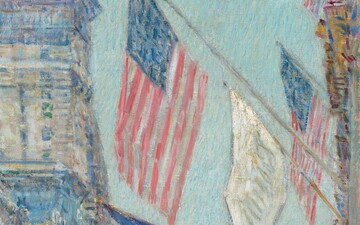-
I made a graph of polling data in Finland on support for joining NATO from 1998 up through Finland joining NATO in April 2023.
(Insert witticism about correlation and causation.)
-
In September 1893, Churchill was admitted, on his third attempt, to the Sandhurst military college. He wrote to his father, “I was so glad to be able to send you the good news on Thursday.” His father, a former Chancellor of the Exchequer and leader of the House of Commons, wrote back a week later. The full text the reply doesn’t seem to be available, but we have these glimpses:
You should be ashamed of your slovenly, happy-go-lucky, harum, scarum style of work. […] Never have I received a really good report of your conduct from any headmaster or tutor. […] Always behind, incessant complaints of a total want of application to your work. […] You have failed to get into the 60th Rifles, the finest regiment in the army. […] You have imposed on me an extra charge of some 200 pounds a year.
[…]
Do not think that I am going to take the trouble of writing you long letters after every failure you commit and undergo. […] I no longer attach the slightest weight to anything you may say. […] If you cannot prevent yourself from leading the idle, useless, unprofitable life you have had during your school days, […] you will become a mere social wastrel, one of the hundreds of public school failures, and you will degenerate into a shabby, unhappy and futile existence. […] You will have to bear all the blame for such misfortunes.
[…]
Your mother sends her love.
Churchill was 19.
-
In May 1968, far-left student protests in Paris sparked a period of civil unrest across France. The recorded graffiti (also in French) is like a glimpse into a secret 1968 proto-Twitter. Some favorites:
I suspect God of being a leftist intellectual.
The student’s susceptibility to recruitment as a militant for any cause is a sufficient demonstration of his real impotence.
You will end up dying of comfort.
SEX: It’s okay, says Mao, as long as you don’t do it too often.
People who work get bored when they don’t work. People who don’t work never get bored.
Down with the abstract, long live the ephemeral.
Art is dead, don’t consume its corpse.
When the last sociologist has been hung with the guts of the last bureaucrat, will we still have “problems”?
A cop sleeps inside each one of us. We must kill him.
Please leave the Communist Party as clean on leaving it as you would like to find it on entering.
- Apparently, these students were greatly influenced by Situationism:
In their expanded interpretation of Marxist theory, the situationists asserted that the misery of social alienation and commodity fetishism were no longer limited to the fundamental components of capitalist society, but had now in advanced capitalism spread themselves to every aspect of life and culture. They rejected the idea that advanced capitalism’s apparent successes—such as technological advancement, increased productive capacity, and a raised general quality of life when compared to previous systems, such as feudalism—could ever outweigh the social dysfunction and degradation of everyday life that it simultaneously inflicted.
-
You might have read my attempt (Asterisk magazine version) to reconstruct how the NIH started a $100 million randomized trial on the health impact of moderate drinking and then cancelled it after coordination with the alcohol industry was revealed. Since we aren’t getting that trial any time soon, Congress recently asked the National Academies to get a group of experts together to summarize the imperfect evidence we do have. That group included… the lead investigator of the cancelled trial, the same guy that spent years planning the trail with the alcohol industry and then claimed he had no idea that the alcohol industry was involved at all. After the New York Times reported on his “provisional appointment”, he was removed from the group within an hour.
-
Here are the number of spite houses in different countries that are mentioned on the spite house Wikipedia page:
Country # spite houses Iraq 1 England 1 Canada 1 Bosnia 1 Argentina 1 Lebanon 1 United States 19 And inside the US:
State # spite houses Connecticut 1 Maine 1 Maryland 1 Nevada 1 Virginia 1 Washington 1 California 2 Kansas 2 New York 4 Massachusetts 5 -
The American Department of Defense recently did an analysis of 17-24 year olds and found that 77 percent were unqualified to serve in the military, due mostly to obesity, drug abuse, physical health, or mental health. Almost half were disqualified for more than one of those reasons:
So that seems concerning, for multiple reasons. But looking into it, maybe it’s not as bad as it seems?
-
35% were disqualified for being overweight. But the limit for the army (for men) is 20% body fat which is reasonably strict.
-
24% were disqualified for “drug abuse”. But that—in theory—includes anyone who has ever used marijuana.
-
-
Also, the Department of Defense combines these criteria with a network of military recruiters. If you want to join the army, your recruiter will help you diet and maybe dehydrate yourself to meet the weight limit. They will also, by all accounts, give you an off-the-books drug test and if you fail, will give you some tips and tell you to come back later. They will also make it very obvious that when you’re asked if you’ve ever used marijuana, you are expected to lie. It’s cute when the government has little battles with itself like this.
-
If you haven’t seen it before, the 2008 Pepsi BREATHTAKING Design Strategy is really something.
That’s page 6. There are 21 more. Savor them. After each page, ask yourself if things could become more ridiculous. (They can.) It’s beyond parody.
Really, it’s too good—I thought it had to be some kind of stunt. But I can’t find any evidence, and the company responsible went out of business in 2013.
-
I recently had a visionary idea: (1) bad air is bad for you (2) so we should monitor local air quality (3) but that’s mildly annoying (4) so we don’t do it (5) so why not make a service where you enter your location and get an email if PM2.5 goes above some threshold and thereby add some free DALYs to the universe?
The answer, in the US at least, is that this is a free service the government already provides. Consider signing up, it’s easy.

-
Here’s a cautionary tale from someone who caught my obsession with air quality and built a Cuboid.
I built the cuboid and used it for about a year. I just replaced the filters. It worked well. Life was good.
Then the horrendous air quality hit Milwaukee a couple weeks ago. It was some of the worst in the world. Even with cuboid going plus two small Levoit filters, our PMI 2.5 levels in our one bedroom apartment stayed in the unhealthy range indoors. (I use this device for measurements)
The thing that instantly knocked the levels down to “moderate” (a PMI 2.5 level of around 25 if I recall) was turning on our 2 year old Coway Airmega AP-1512HH, one of the fancy brand name air filters that Scott2 mentioned above. It’s the type of machine that Dynomight would probably scoff at me for owning.
The filters in the Coway were over a year old, so I wasn’t sure how effective it would be. We hadn’t used it up to that point because DW thought it had been giving off a weird odor. But we were desperate, so I cleaned the filters and let it rip. Then I watched in amazement as the air quality rapidly improved. This thing worked like a beast. If my measuring device is to be trusted, it was more effective than my all my other air filters combined.
I feel kind of silly for going all in on the cuboid, and for telling many people about how great it was. Don’t get me wrong, it definitely works. It’s just not in the same league as the fancy unit we owned. Sometimes the giant corporations with their R&D departments, their decades of experience, and their highly paid engineers really can make a better product than an overconfident outsider with no domain expertise. Who would have thunk it.
This is a good story, but a couple notes: (1) If you go by the listed clean air delivery rates, the Coway purifier should do more than all the other purifiers combined (at higher cost). (2) There’s nothing wrong with commercial air purifiers! I just think it’s weird that manufacturers don’t provide more evidence that their products actually work, given that they’re borderline unregulated and tests suggest some don’t work as advertised. (Also I don’t scoff that much.)
-
The Tunnel of Eupalinos: Around 2500 years ago, the Greek city-state of Samos wanted a water source that couldn’t be cut off by invading armies. So they dug a 1 km aqueduct from a spring through a mountain and hid it so no one would know it was there. It worked for 1100 years before filling up with silt, and eventually was forgotten and lost. Then, in the 1800s, people noticed this passage in Herodotus:
The Samians […] are responsible for […] a tunnel nearly a mile long, eight feet wide and eight feet high, driven clean through the base of a hill nine hundred feet in height. The whole length of it carries a second cutting thirty feet deep and three broad, along which water from an abundant source is led through pipes into the town.
And they thought, “Huh. Maybe that’s real? Maybe we can find it?” So they looked, and found the spring in 1853. They started clearing the tunnel in 1882 with the idea of bringing it back into use (!) but eventually decided that wasn’t practical. The tunnel was finally excavated in 1973.
-
So how do you build a 1 km tunnel through solid rock 2500 years ago when no one else has ever done that before? Seemingly like this:
-
The spring is 52 m above sea level on the other side of a mountain. Excavate a large underground reservoir next to it and cover it with large stone slabs supported by stone pillars.
-
Physically mark out a straight line over the top of the mountain. Using sightings, locate two starting points on opposite sides of the mountain. Make sure they are at the same elevation by creating a level path between them around the side of the mountain.
-
Dig a single-man sided hole on each side of the mountain by forcing prisoners to remove 12-15 cm of rock per day. Again use sightings to make sure the tunnels are headed towards each other in the horizontal plane and use gravity to keep both tunnels level. Where necessary, jam stone slabs into each other over the tunnel to protect from rockfall. This takes around 8 years.
-
When the tunnels are nearby, cleverly bend the paths to make sure they meet in the horizontal plane and expand them vertically to make sure they meet in the vertical plane. When you’re within 12 m or so, locate the other tunnel by banging on the rock.
-
Oops, the water now comes out of the spring at a lower level. Dig a second smaller tunnel beneath the first one.
-
Dig a 890 m channel from the reservoir to the first starting point, around 0.7 m wide and 5 m deep.
-
Install thousands of open terra-cotta pipes to carry the water all the way from the spring to the city.
-
Cover the spring, the reservoir, the channel, and the entrance to the tunnel with dirt and let plants grow on top so that no one will know they are there.
-
-
Speaking of ancient Greece, here’s a 3.4 cm bronze seal that was made in around 1450 BC and discovered in 2017.

Every day you don’t have to engage in hand-to-hand combat and get stabbed in the neck is a good day.
Jan 2024

One-indexing problems in everyday life
Here's a sentence from Steven Pinker's Enlightenment Now: 'The Enlightenment is conventionally placed in the last two-thirds of the 18th century, though it flowed out of the Scientific Revolution and the Age of Reason in the 17th century and spilled...

Do extroverts have more martial confidence?
Thank you to the 966 people who filled out the survey. And thanks also to the strangely numerous people who read all the questions and wrote to me about them but didn’t answer them. (Though: why?)

(in which you are surveyed)
Hello, clever charming good-looking people. I am in need of a richer understanding of: you, the nature of reality, consciousness, ethics, dynomight internet website, and have therefore created a survey, which you can take it here. (You don't need to...

Or: Things where there's a case worth considering that they don't work all that well for most people.
1. Acupuncture. 2. Phenylephrine. 3. Multivitamins. 4. Phosphoric acid. (for nausea) 5. Tree-based knowledge organization. The physical world whispers to us to organize information into "trees". For example, say you write something on a piece of paper, put the paper...

16 queries and 6 language models
Language models, whatever. Maybe they can write code or summarize text or regurgitate copyrighted stuff. But… can you take ducks home from the park? If you ask models how to do that, they often refuse to tell you. So I...

Are fancy fragile solutions overrated?
I have an almost moral dislike for the four-wheeled suitcase. Bear with me here. Before 1972, luggage had no wheels. Then, Bernard Sadow patented this design with four small wheels and a strap: By all accounts, this design wasn’t great...

greater lesson unclear
1. There’s an early scene where Lawrence leaves a band of Bedouin people to go look for a man who was lost in the desert. He does this despite fierce warnings that after the sun rose, he would almost certainly...

Noise, Indian cheetahs, and Fighting Joe
I think the bluetooth speaker is a pox on our civilization. Random noise makes it hard for me to concentrate. I tried the obvious thing and created a passive-aggressive mathematical model, but that unexpectedly failed to make the problem go...

That's what she said, a rabbi resolves a dispute, and six categories in the Philogelos
I've noticed a disturbing phenomenon: Many people who only recently watched the US version of The Office seem to think that Michael Scott invented That's what she said. Of course, the actual joke was supposed to be a ghoulish delight...

A potent anti-humor technology
No soap, radio is a sort of prank where you tell a "joke" with a meaningless punchline. The hope is that your victim will laugh despite not understanding it, thereby enabling you to ridicule them. Apparently, this works best if...

Sixteen observations on Albania, Montenegro, and Macedonia
People say the cafes in Albania are great. This is true. They are similar to Italy but with environments that are more laid-back and… better? Standards are remarkably high even at roadside cafes next to petrol stations.

Gorillas, penguins, noise location, air quality, and a conversational pattern that needs a name
Has a gorilla killed a human? Gorillas, despite their immense size and strength, are not aggressive. They are vegetarian except for eating insects and occasionally small rodents. In 1986, a five-year-old child fell into the gorilla pit in the Channel...

More on teaching, hot in-laws, medical diagnostics, and some questions thrown into the void
Here's a collection of a few disconnected follow-ups plus some questions thrown into the void. Contra me on teaching. A couple of months back, I took issue with Parrhesia's proposal to make final exams worth 100% of the final grade,...

Meanwhile, in the multiverse...
In your particular branch of spacetime, you may see things like this:
















